11 Strongest Dog Breeds (in the world) + Photos
Owning a dog is an amazing experience—they are not just pets but family, filling their owner’s life with love and joy. However, with so many breeds out there, it is easy to get confused about which one to bring into your family.
Some prefer to have a small cute companion who is more like a toy, while others like a companion that is strong and sporty so they can tag it along on their adventurous outings.
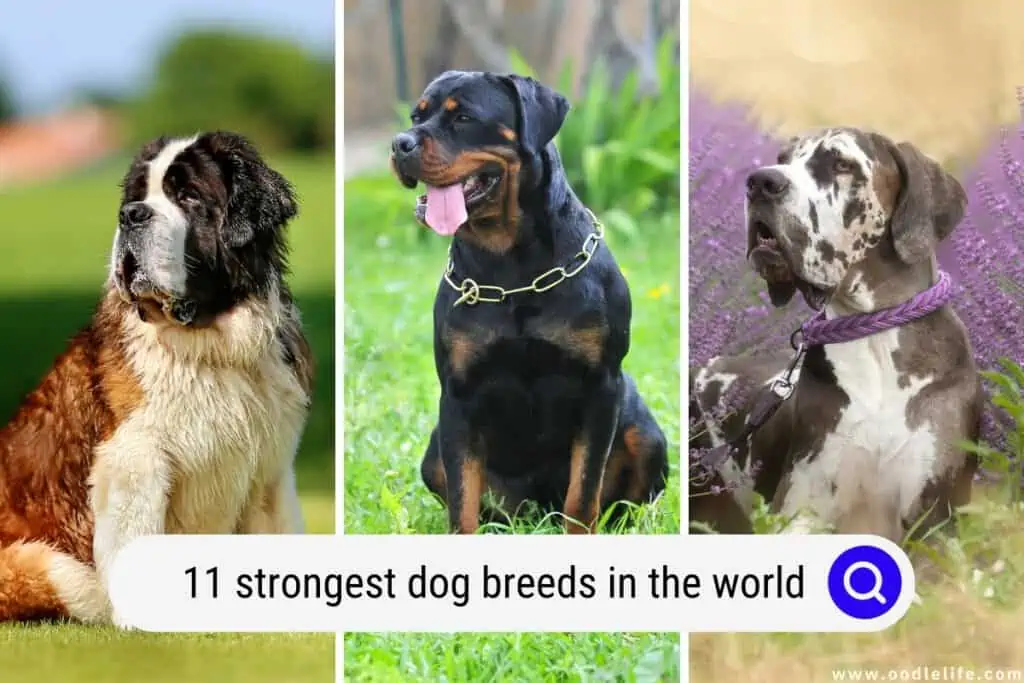
If you are looking for a strong and imposing dog that will be your adventurous buddy and protect you from unwanted guests, here is our list of the 11 strongest dog breeds.
1. Saint Bernard
Saint Bernards are massive; that’s why they were bred as guard dogs, guarding the great Saint Bernard Hospice in Switzerland. They can weigh up to 180 pounds, giving them the imposing look a guard dog requires.
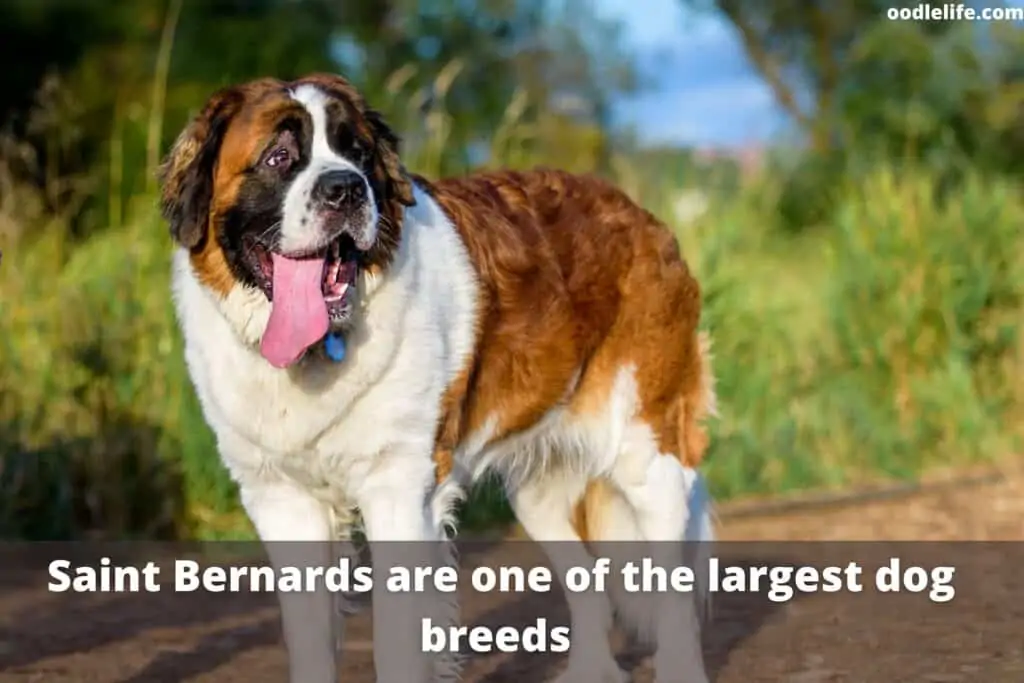
The animal is strong, protective, powerful, and muscular, making it one of the strongest dogs. And despite all this, the animal is an amazing family friend, affectionate towards humans and drooling all over the ones they love.
However, owning a Saint Bernard is a big responsibility. You must meet its exercise requirements and train it properly. Further, Saint Bernard is a heavy shedder, so you must also consider its grooming needs.
2. Siberian Husky
The breed is originally from Siberia and can withstand freezing temperatures and pull heavy weights. They proved their stamina and power when they raced to Alaska to deliver a life-saving Diphtheria serum during the 1925 Diphtheria outbreak.
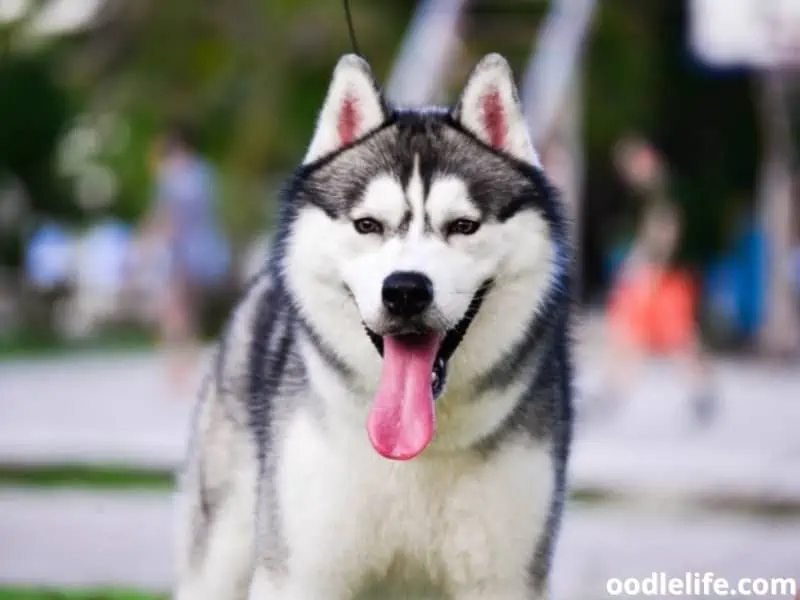
Their wolf-like features, distinctive eyes, and beautiful double coats give them a striking appearance that is pleasing to the eyes. The strong, athletic, and muscular dog belongs to the working dog category and is happiest when it has a job to do. They make excellent pets but can become a handful for first-time owners as they are prideful dogs that can become independent and challenge their owners.
The intelligent breed has a great temperament, making it a favorite of many. The big dog is playful yet difficult to train as it does not care about pleasing people. These dogs do best with experienced and confident owners who know to set the rules and define themselves as the alpha of the pack.
3. Rottweiler
Another strong and independent dog, the Rottweiler is quick to define itself as the leader of the pack if it does not have a confident pack leader bossing it around.
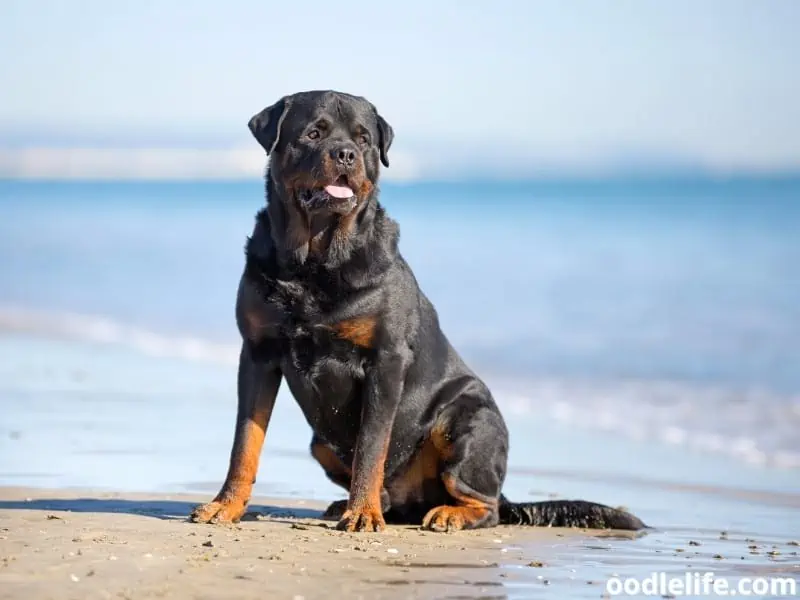
The animal is robust, strong, and powerful, so much so that it is often considered aggressive. It belongs to the working dogs’ family, bred to drive cattle to the market and, later, to pull the butcher’s cart. They love to work and play and are always ready for a game of fetch.
Their strong physique is the physical proof of their strength. However, when trained properly and in the right setting, Rottweilers are amazing family pets that are loving, gentle, and affectionate towards their owners.
The dog is naturally protective and aloof with strangers. With proper training, socialization, and daily exercise, Rottweilers will make loyal pets and guardians. However, it is best to supervise them around children.
4. Boxer
The Boxer does not have an imposing weight like many other dogs on the list; however, that does not affect their strength or power. They were originally bred as guard dogs but soon switched to the working dog category.
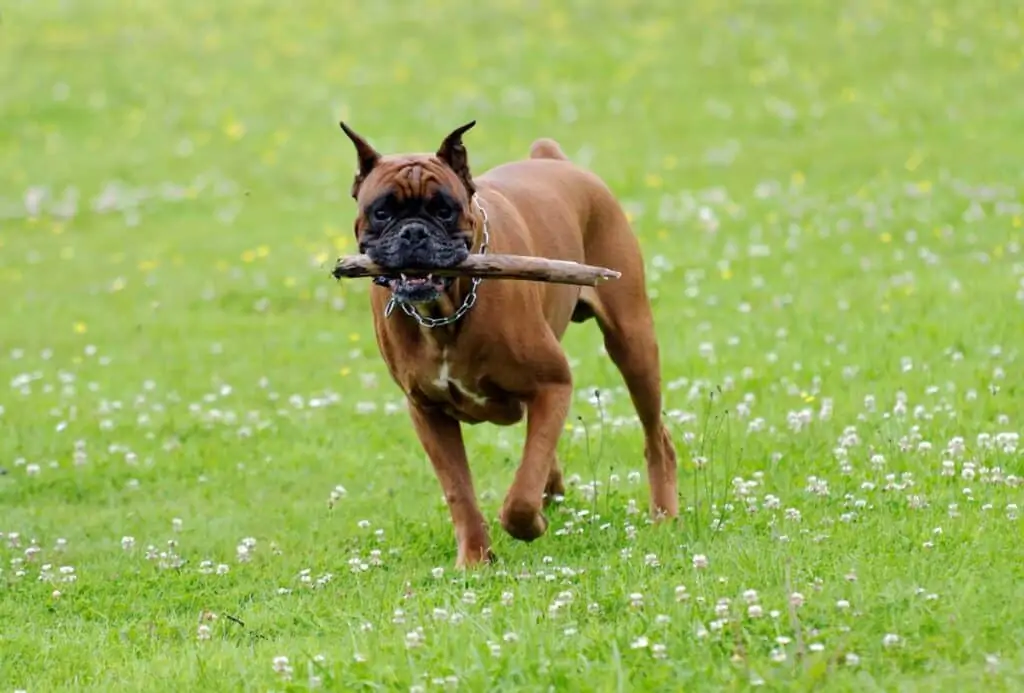
Boxers have square jaws and a muscular physique paired with a ferocious look that is enough to scare away any mischief-makers. They are versatile and can work as war dogs, police dogs, cattle dogs, and more.
The animal is lovely and loyal with a humorous side but can quickly transition to an alert and protective companion when the need arises. They do not trust strangers but do not act aggressively and attack only when they pose a threat.
The Boxer has a high energy level and high exercise needs. Also, mental stimulation and early socialization are a must with this breed; otherwise, they may develop negative and destructive behaviors.
5. Great Dane
The Great Dane is great when you consider its height. Initially developed to protect estates and hunt big game, the German breed is a cross between Irish Wolfhounds and English Mastiffs.
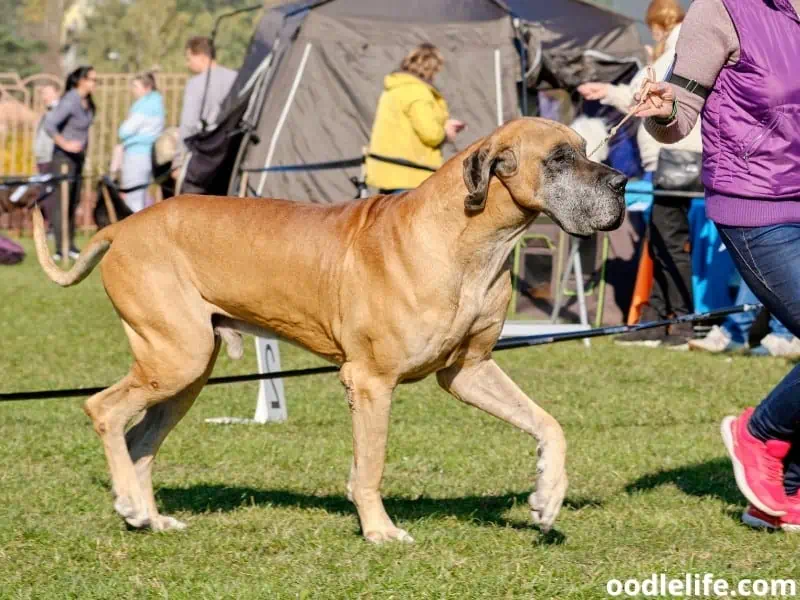
And although the ferocity has been bred out of Great Danes, they still hold power to scare away an intruder with their mere presence and powerful bark. The animal is so strong that it can easily carry one-third of its own body weight.
The Great Dane is elegant, sleek, lovely, affectionate, and likes to cuddle. The muscular animal is a gentle giant that loves children. However, considering their imposing size, you’ll need to train and socialize them right from the beginning when they are young; otherwise, they will become difficult to control when they grow up.
They are people-oriented and people pleasers. They love to be patted, so finding one with lapdog tendencies is not hard. They need regular exercise and a yard to play in, or they may develop destructive behaviors.
6. Newfoundland
The strong Newfoundland is a large dog breed from Newfoundland. Along with strength, the powerful dog is also known for its high level of endurance. Newfoundlands have webbed feet, which makes them exceptional swimmers.
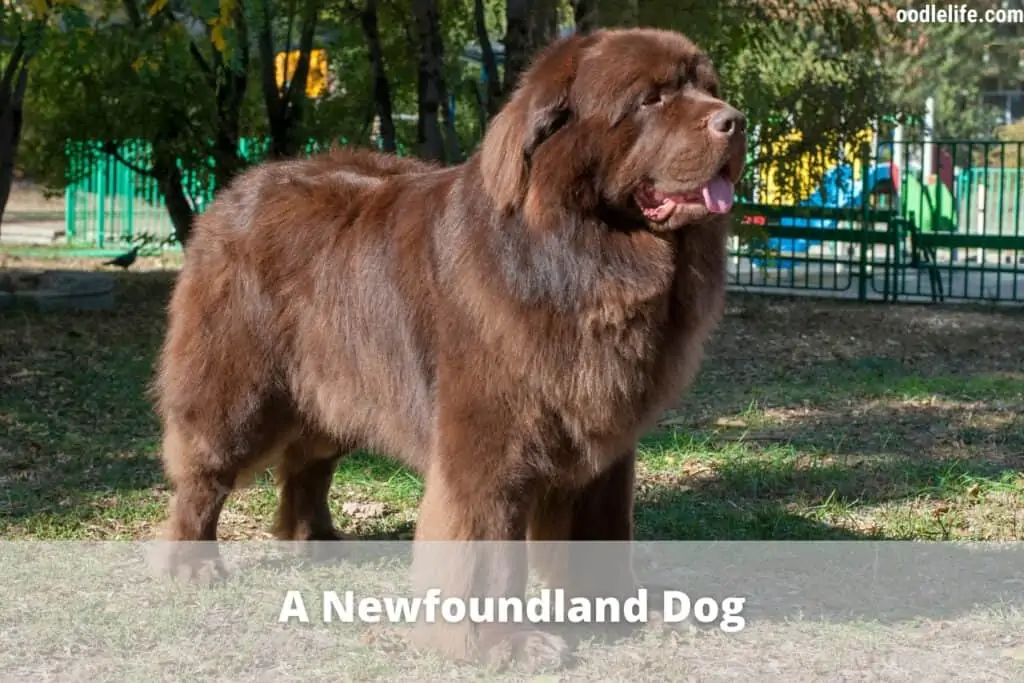
As a result, Newfoundlands are brilliant at water sports and make excellent lifeguards. They are working dogs that toiled alongside fishermen to pull nets.
The breed is also known for its love for children. Many Newfoundland owners agree that the breed is a natural babysitter. The giant dog is intelligent, hard-working, adaptable, versatile, and a people pleaser.
However, maintaining the dog’s double coat is a bit of a task, and the animal is not for neat freaks.
The dog is easy to train, but you must initiate training early. The Newfoundland also needs daily exercise and mental stimulation.
7. German Shepherd
The German Shepherd is one of the most recognized breeds worldwide. Often seen alongside police, the dog is very versatile and can be employed for several jobs like detecting illegal substances, herding stock, leading the blind, and visiting the sick.
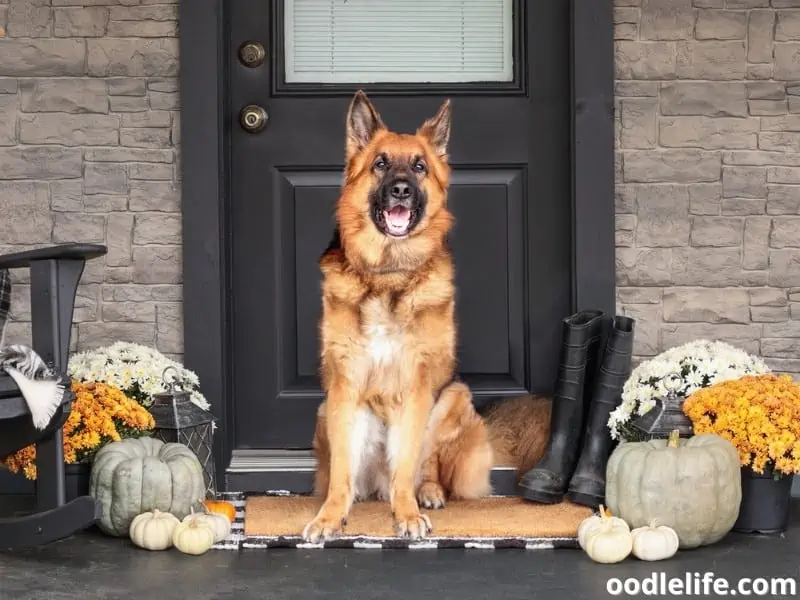
German Shepherds are muscular dogs with well-built frames. They have a powerful bite that can tear down their prey. The dog does not make friends easily and is wary of strangers.
The dog can make amazing family pets if trained and socialized from an early age. They are great with children and love to play. However, they are not for owners who stay away from their homes for long periods.
When left alone, the dog can develop destructive behaviors like chewing and barking.
The dog develops best when kept busy. Plenty of exercises, mental stimulation, and other activities that keep this intelligent breed busy must be part of the daily routine.
8. Irish Wolfhound
They are the world’s tallest dog breed, and their height was utilized during wars. They were used to drag men off their chariots and horses. They were also used to hunt for big game like the wolf, boar, and deer.
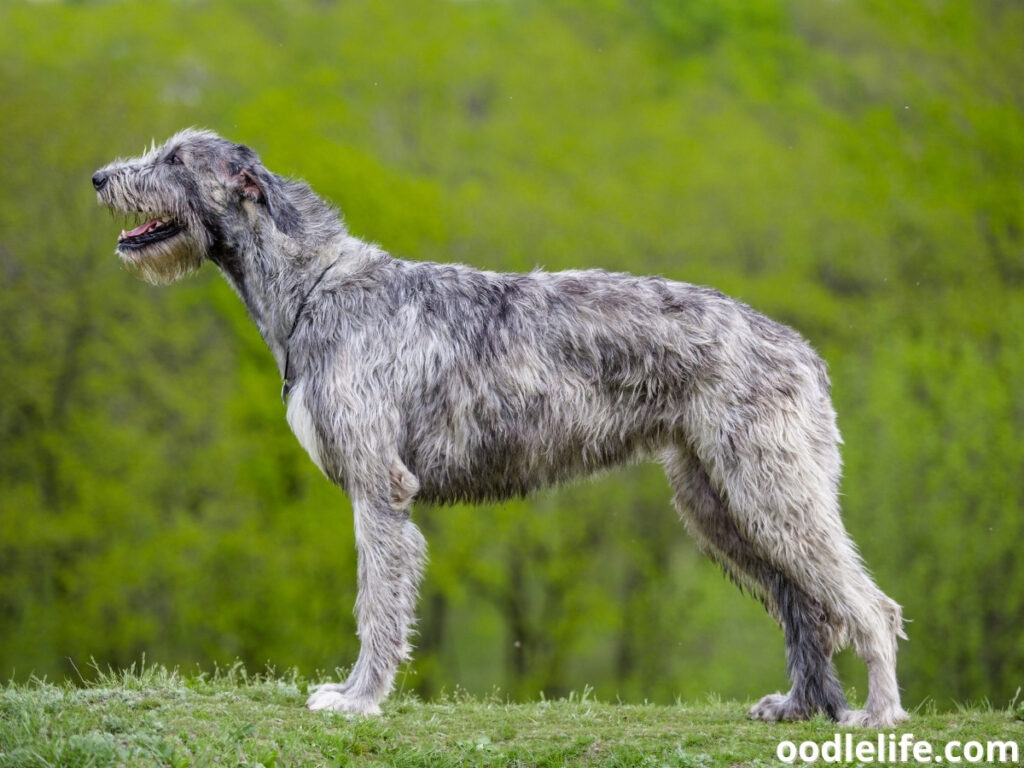
The dog has a strong and muscular physique, and combined with its imposing height, it can be very intimidating, but only in terms of looks. The Irish Wolfhound is a very sweet dog. It gets along with children, dogs, and even cats.
They need daily exercise and are not suitable for apartment life. They need a big home and a fenced yard to play and run around. However, the animal has a very short lifespan of 6 to 8 years and is not ideal for someone looking for a long-time companion.
Also, the breed is prone to many health issues and must only be adopted from responsible and ethical breeders.
9. Mastiff
One of the most ancient breeds, the Mastiff was originally a ferocious war dog. The dogs are massive, and although they are not the tallest, Mastiffs outweigh most breeds. Weighing up to 230 pounds, the Mastiffs are a strong breed.
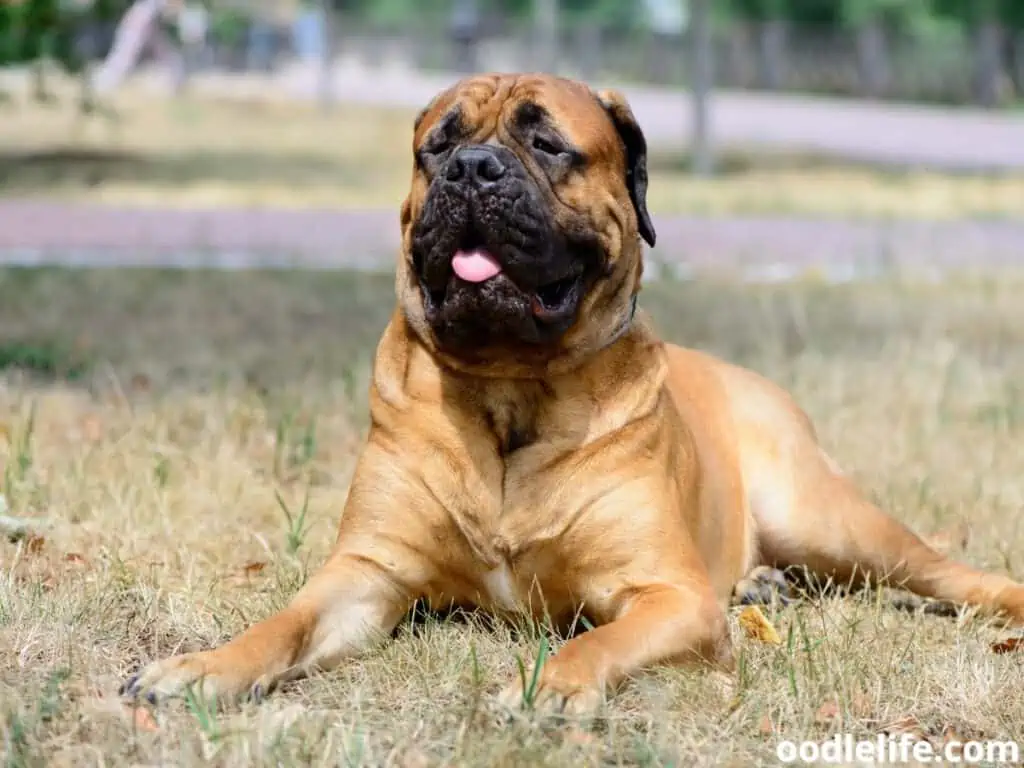
Today, the police and the military often employ the intelligent Mastiff.
The heavy-boned dog is a gentle giant loyal and protective of its humans. And although they make amazing family pets, they need to be trained and socialized right from the beginning, as they can accidentally knock over and injure people. Hence, they are not ideal for families with small children and senior citizens.
They have exceptional strength and will easily get away from you if you do not hold the leash tightly. They are not suitable for apartment life and need daily exercise to meet their daily energy requirements.
10. Rhodesian Ridgeback
Bred as a hunter and home guardian, the strong Rhodesian Ridgeback was used for hunting lions in Africa. The dog made for a skilled hunter with its muscular build and high speed.
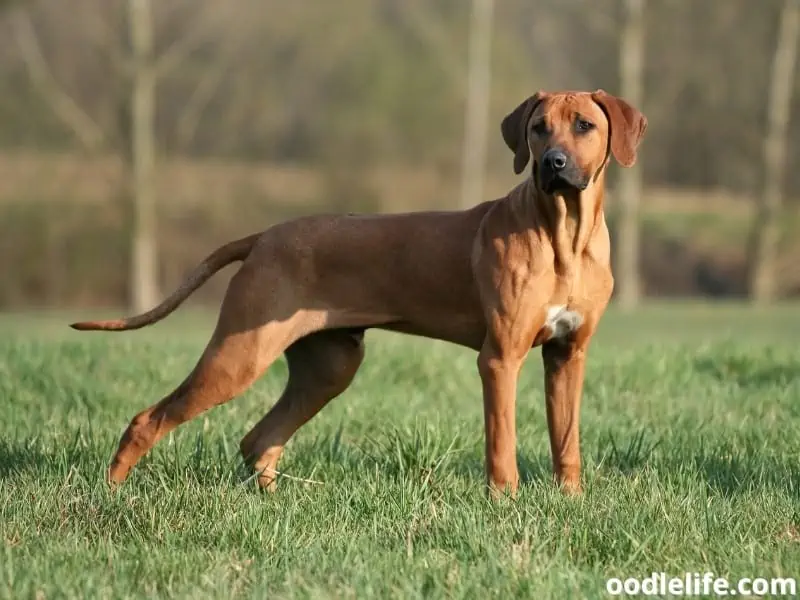
Today, they are more likely to hunt for a soft spot on the sofa beside their humans. The big lovely dog is affectionate and loyal but can also be stubborn. They need to be trained properly as pups, with a firm command to understand the hierarchy of the house.
They do not do well in apartment life and are not for first-time owners. The pup has high energy needs, but as it grows into an adult, it has moderate exercise requirements.
11. Alaskan Malamute
Apart from being strong and powerful, the Alaskan Malamute is also independent, intelligent, and has a high energy endurance. They were bred to pull sleds and hunt polar bears and seals. However, today, the dog serves as a companion.
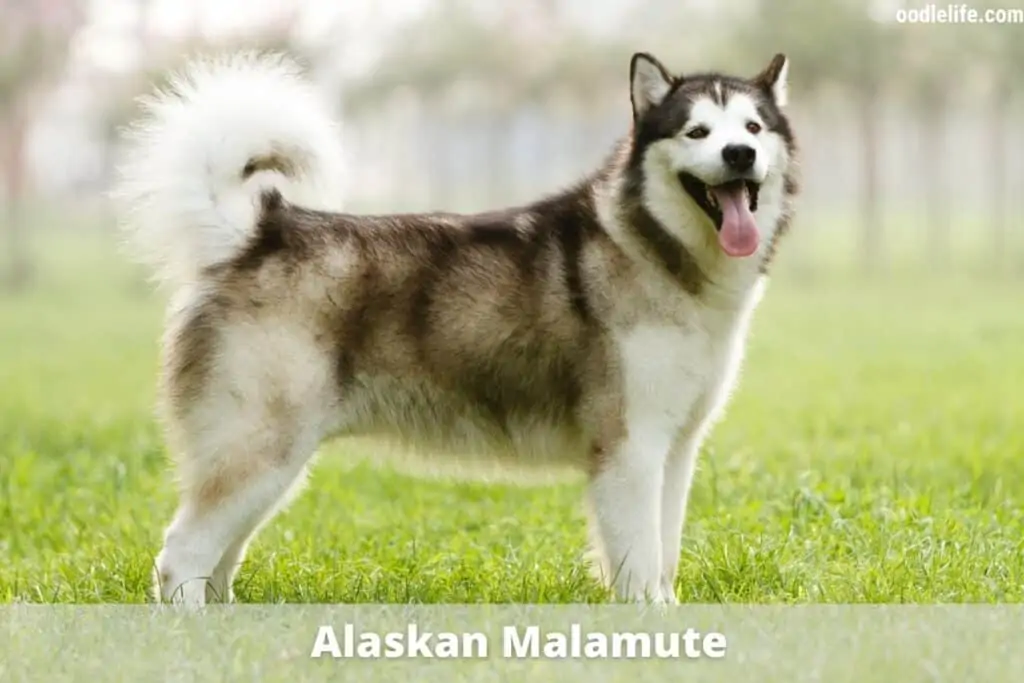
And although their size can be intimidating, it is the only feature that can scare off an intruder. The dog is a friendly creature that makes friends with almost anyone, so they will not be the best watchdogs.
They have high exercise requirements and may become restless and bored without ample exercise. They are not for first-time owners or owners who stay away from home for long periods.
How To Care For Your Strong Pet?
One of the most common features of all strong dogs is their imposing personalities. As they are large animals, they have specific requirements and needs when it comes to diet, training, grooming, and exercise.
If you, too, are a proud parent of one of the above strong breeds, here are a few tips on how to take care of your strong dog:
Puppyhood Is Important
Puppies have a faster growth rate, and when it comes to large breeds, factoring in their growth rate is very important. They need a unique balance of nutrients, proteins, fat, calcium, and other vitamins and minerals. An imbalanced or improper diet can interfere with the optimum growth of the puppy.
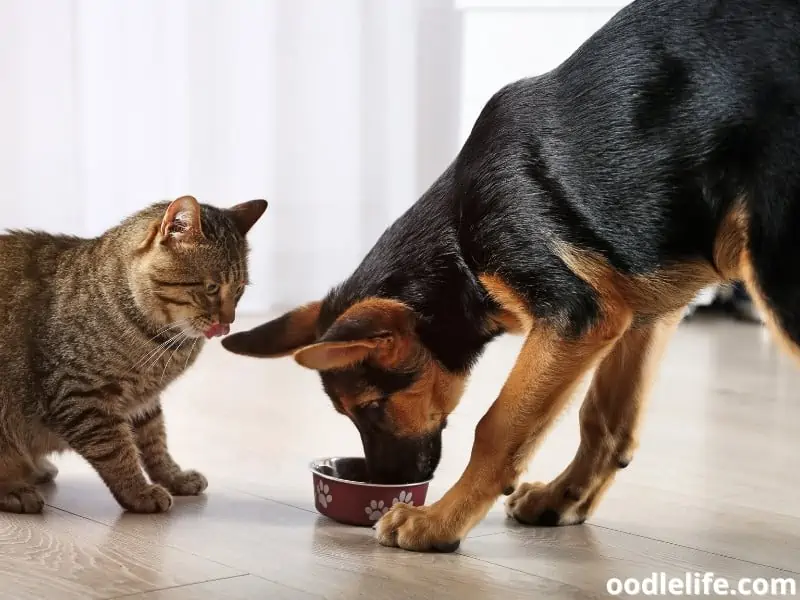
Also, puppies are fragile—even those belonging to large breeds—so avoid engaging them in vigorous exercise and activities that stress the joints.
Training Must Be Made Top Priority
While training is a must for all dog breeds, it becomes more critical for large and strong dogs. As these dogs can potentially injure people more easily, destructive behaviors from large dogs are unacceptable.
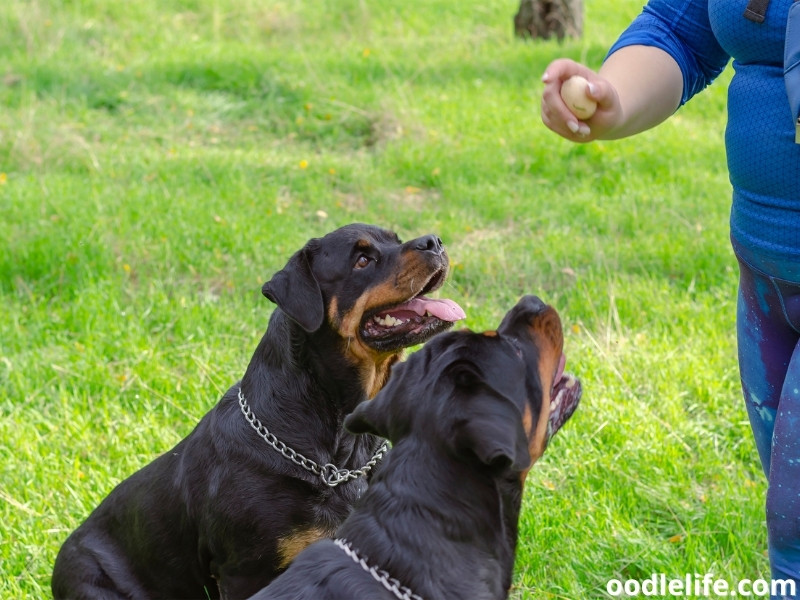
With their immense size, they can knock over people in excitement, their big teeth can destroy almost anything, and they can pull away easily, causing harm and injury to themselves and others.
Improper training and socialization are often why many large dog breeds end up in shelters.
Keep Expenses In Mind
Large dogs mean more significant expenses. They have more specific and expensive requirements in terms of crates, beds, toys, and other supplies. They also require more space and food, and their medication can be costlier.

Be Aware Of Large Dog Health Problems
Larger dogs have shorter lifespans. Also, you do not want them to suffer during this short period. Educate yourself on the health problems of the breed you have adopted, get one from a responsible breeder, feed your dog a healthy diet, and meet its daily exercise needs.
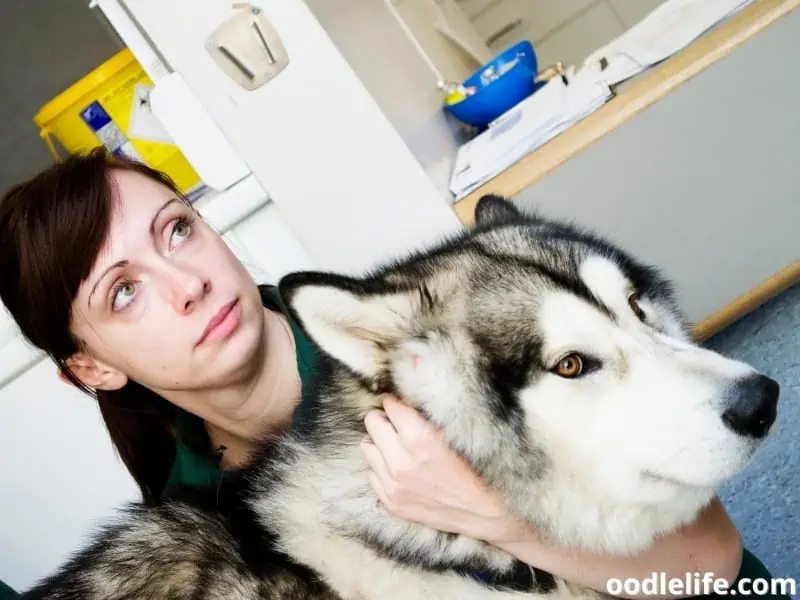
Exercise Is A Must
Larger dogs have more exercise needs. Also, they are not suitable for apartment life, so adopt them only if you have a large space for them to run and play.

Conclusion
Owning a dog is a beautiful experience. However, various breeds have different needs. When adopting one, it is vital to ensure the dog matches your lifestyle and needs and vice versa.
While some prefer small buddies, others prefer strong, muscular breeds. We hope this article on the 11 strongest dog breeds helps you find the most suitable pet for you and your family.